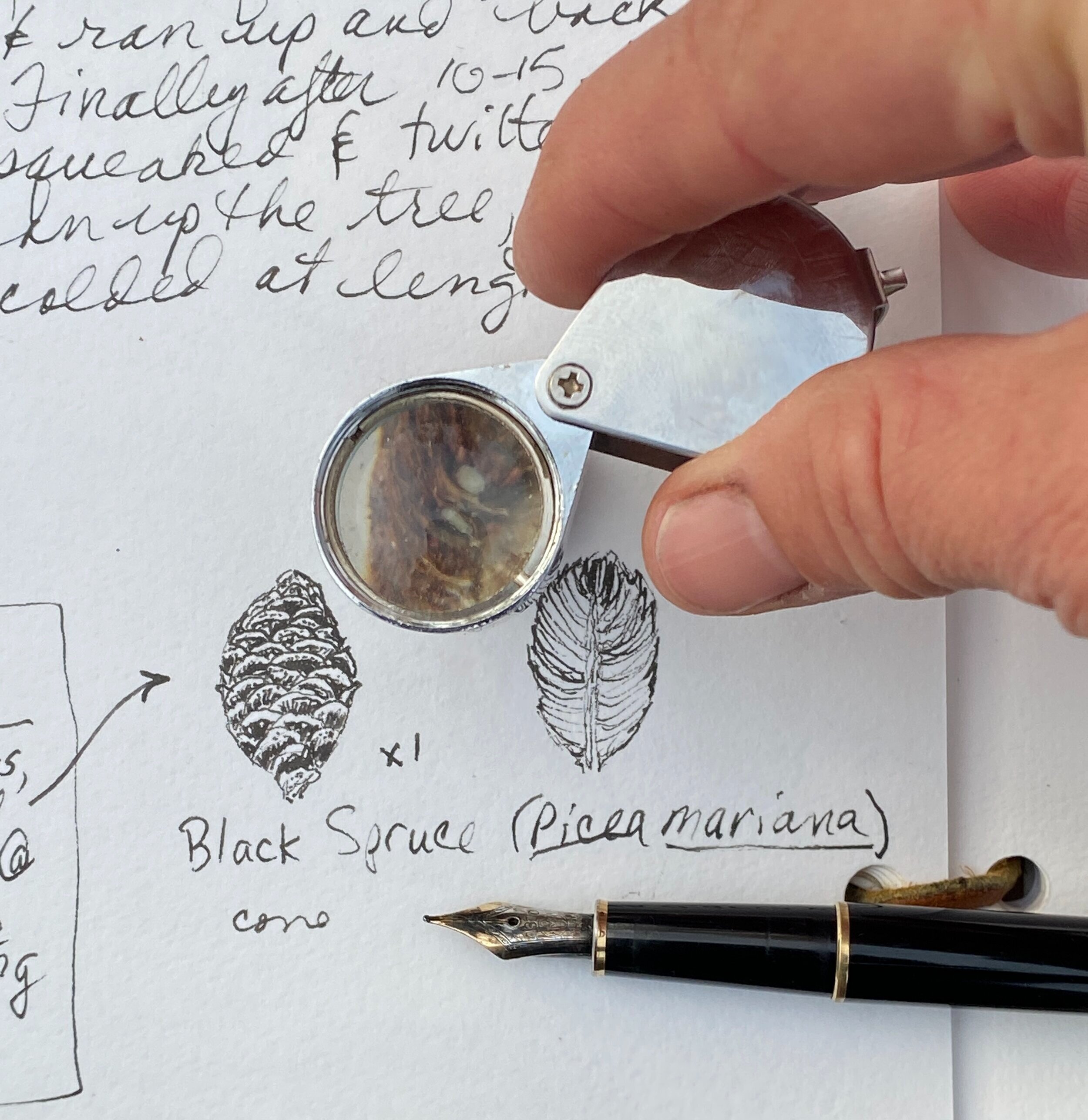Field Arts tools: A round-up
As field artists we tend to focus on the tools of paper and ink and color . . . but there are many other tools that enhance our ability to see, study, and record our nature observations. Below is a round-up of my favorite field arts tools. I go into much greater detail on each of these in my book, Master of Field Arts. The Field Arts Discovery Kit includes two of the tools listed below, a Pocket Loupe and a Mini Plant Press.
Pocket Loupe
In my mind, the well-equipped naturalist and Master of Field Arts will carry two optics tools in his or her kit. The least expensive and also most indispensible is a loupe or pocket loupe. The word may derive from Old French meaning “sapphire lens.”
Use one to inspect the reproductive parts of a flower, the scales on a butterfly wing, or even the edge of your field knife whilst sharpening. What to look for:
- I like 10X power—although you’ll find more powerful loupes, the greater the magnification, the smaller the depth of field (which is hard to use), and with lower-powered magnification, you just can’t see as much detail.
- Glass lenses (rather than plastic).
- Triple lenses, called a “triplet” or “Hastings triplet.”
- A self-cover and a pouch for carrying is a bonus.
The Field Arts Discovery Kit includes a Pocket Loupe; a higher quality option is a $30 Bausch and Lomb Coddington model.
Binocular
A binocular is the next most important optic. And if you want to be insufferable, insist on saying “binocular” and never “a pair of binoculars.” That’s because a binocular is literally two ocular lenses; a monocular is one ocular lens.
Okay, didacticism aside, let’s get down to why every serious naturalist needs a good binocular instrument for:
- Observing wildlife from a far vantage point without disrupting the animal’s behavior;
- Observing close-but-small subjects such as butterflies and lizards;
- Scanning far landscape features such as geology or plant species;
- Observing very small details (by inverting the oculars).
My favorite binocular is the Swarovski NL 8X32: excellent exit pupil size for great low-light viewing, fantastic field of view, amazingly close focus for the power, and excellent weight for their power. I can wear mine all day and not feel any neck strain, and because of the superb optics, no eye strain. They are, however, very expensive (worth it if this is a tool you use every day, like I do; plus Swarovski’s warranty is excellent and portable with the binocular, so look for them used if you can). An alternative that is the excellent 8x30 CL.
We’ve been Swarovski fans for more than 30 years and remain so to this day. My only minor complaint is their new strap system, which is way too fussy—as you can see, I replaced mine with a simple leather strap, which is far preferable to the vaguely S&M contraption that is stock.
Field Knife
“Back in the day,” as the saying goes, whether hiking, backpacking, canoeing, car-camping, hunting, or doing fieldwork as a biologist, you carried a fixed- blade sheath knife. It was axiomatic that the knife would be your primary tool for dozens of tasks: cutting rope and webbing, field-dressing fish or game, cooking and eating, carving, you name it.
It was also axiomatic that a fixed-blade knife would be the best choice for those tasks, given its superior strength and control over a folding knife, and easy one-hand accessibility right there at your belt.
I favor a knife no longer than 4 inches, with a spear-point blade and a Scandinavian (“Scandi”) grind (the blade holds its thickness from the spine most of the way toward the edge, which has a single bevel extending quite high up each side). These are versatile and very strong. The knife above is my original little LT Wright field knife with a stag handle (no longer made, sadly); today my knife is a 3.5-inch Böker with a leather sheath, made in Argentina.
Mini Plant Press
In the mid-1980s I acquired a 3x5-inch mini plant press from Vince Roth, the director of the Southwest Research Station—he made a few to sell to students and fellow biologists. It’s been with me all over the world, and I love it so much I decided to replicate it and offer through my Field Arts Institute. Press flowers, leaves, and other curiosities to preserve in your field journals.




